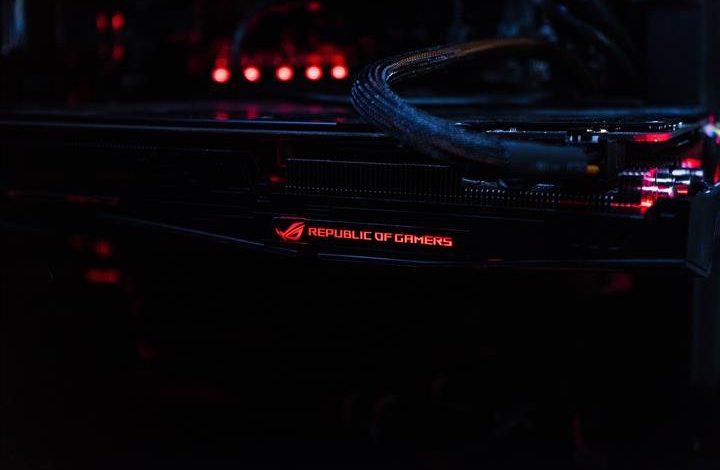
You may have heard that pricey HDMI cords are not worth the investment because they all transmit an identical digital signal. While this is somewhat true, expensive connections aren’t always better than inexpensive ones. However, it’s not easy, especially with newer gaming consoles.
Modern Gaming Requires a Greater Bandwidth
Throughout the 2010s, none of this was a significant worry because most HDMI cables were designed to withstand whatever you threw at them.
However, when more people went toward 4K, HDR, and high-frame-rate gaming in recent years, things became a bit more complicated. The more pixels and the more frequently you transmit them, the more bandwidth you’ll require across the signal chain.
When shopping, search for a cable with a speed rating that corresponds to your needs. The following are the most recent approval ratings by the HDMI Licensing Administrator:
- Standard HDMI is one of the oldest HDMI classifications. These cables have a maximum data rate of 4.95 Gbps and can only handle 1080i or 720p videos. You won’t find one in a store today, but if you’ve been around long enough, you could find one at the bottom of your huge box of random wires.
- High-Speed HDMI cables are far more popular due to their widespread use over the last decade and their future-proof characteristics. Their 10.2-Gbps bandwidth can push 1080p at 60 Hz or 4K at 30 Hz. That implies an outdated cable can certainly stream a 4K Blu-ray at frames per second ( fps). However, if you try to do gaming in 4K with one, you may run into problems.
- Premium High-Speed HDMI is the preferred option for gameplay on 4K-capable consoles such as the PS4 Pro and Xbox One X. These cables can support 4K video at 60fps and a bandwidth of 18 Gbps.
- Ultra High-Speed HDMI: The newest HDMI 2.1 standard, Ultra High-Speed HDMI, has a bandwidth of 48 Gbps and can deliver 8K at 60 Hz, 4K at 120 Hz, and other upcoming gaming functionality you might want.
Other Confusions
Even more puzzling is that some cables may claim to be High Speed but feature a bandwidth of 18 Gbps in their specifications while having no “Premium” term in the description.
Alternatively, some cables may attempt to include phrases like “ultra” in the description despite their cable is not rated for such bandwidth.
Although the cable’s official name is ‘Ultra High-Speed HDMI,’ we have no control over the word ‘Ultra.’ So, if someone wants to rename their cable ‘Ultra Speed’ or ‘Ultra 2000,’ we can’t stop them. It’s easy to see how things may become perplexing, especially if you want to play on a cutting-edge device or PC.
Choosing a High-Quality HDMI Cable
If all of this seems frightening, don’t be alarmed: it’s relatively simple if you know what to look for. Always utilize the cord that arrived with your new video game system. These are made to handle all of the capabilities of that console and are less likely to create difficulties than a random cable you grabbed from a drawer.
However, this isn’t always possible. Perhaps you misplaced the included cable, or you want a longer one than what was given. Furthermore, connections longer than 25 or 50 feet may necessitate an active cable. You’ll want an in-wall cable if you’re connecting it behind a mounted TV.
You’ll have to purchase for yourself in those circumstances.
To begin, use the speed classifications above to refine your search. In addition to the formal term, such as “Ultra High-Speed HDMI,” check out speed rankings like “48 Gbps.” This might help, but low-quality cables can still get through because there are so many manufacturers.
For Premium High Speed and Ultra High-Speed HDMI cables, check the Certification label, which is a little label with a QR code and a hologram.
Consequences of using an Incorrect Cable
The entire concept of “all cables are the same” isn’t precisely accurate. For starters, there are differences in building quality. For example, one cable may be able to sustain acute bends better than another or survive greater damage over time. Nevertheless, price isn’t necessarily a reliable sign of quality.
You can use a cheap cable that isn’t poorly manufactured, and sometimes the most costly cable isn’t the best. If a cable appears too good to be true, it probably is—so shop carefully, just like you would for any other product.
But, especially when it comes to gaming, there’s more to the tale. The speed ratings of different cables dictate what they are capable of.
While the HDMI requirement for your TV, receiver, or speaker is essential—HDMI 2.1 offers the most up-to-date gaming functionalities. However, the quality of the cable is also important. You could have problems with your current gaming consoles if you’re just utilizing a random wire you find in your closet.
It’s also not as straightforward as just displaying an image. In the display, discoloration, flickering, or “sparkling” are all signs of bandwidth difficulties, as can audio dropouts and other oddities. It is usually quite clear.
However, You might not notice it right away. But if you do, your first response could be to fiddle with your TV or gaming console settings or slam your controller against the wall in a fury.
Conclusion
While you should double-check your system’s configuration, you should also double-check your cable, which most people overlook. You don’t need to spend $100 on a cable made of gold and magic, but you do need the correct cable for your task.
Because regular scanners can’t identify the hologram. You can only scan it using HDMI LA’s unique software for iOS and Android. So search for the phrase “Certified” in the product description and a photo of the certification badge in the listing. Then, once you’ve purchased the genuine cable, scan the QR code to prove it’s genuine.
The HDMI Licensing Administrator (HDMI LA) conducts frequent audits of off-the-shelf goods, so if you buy one that has been approved, you may be sure that the cable will be able to push all those frames without a problem.
Before you spend your money, familiarize yourself with new standards and consoles.




